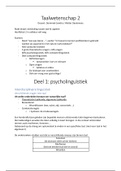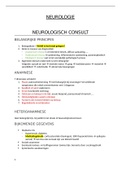Samenvatting
Summary Strategy chapter 1 - 11 (pre-master course)
- Instelling
- Tilburg University (UVT)
Summary of all the chapters (1 - 11) of the book Strategic Management and Competitive Advantage by Jay B. Barney and William S. Hesterly (5th edition). The summary is in English, a few sentences (mainly in the beginning) are in Dutch. Some fellow students used my summary for the exam and all had gr...
[Meer zien]














